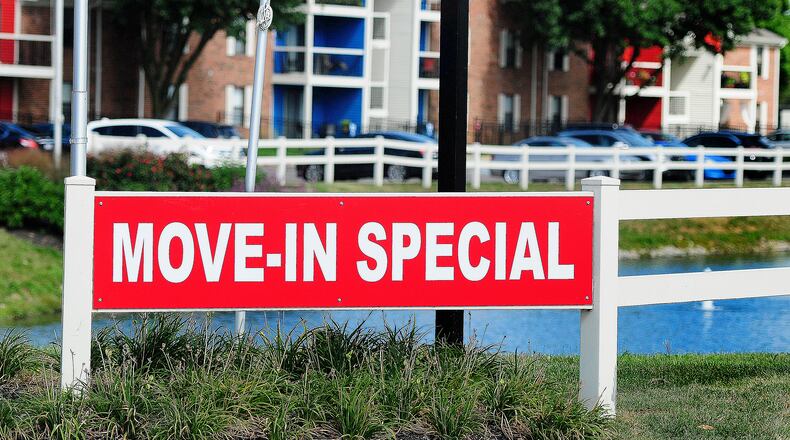This rise in value does not result in a one-to-one increase in property taxes, but Coalition on Homelessness and Housing in Ohio director Amy Riegel said her organization fears families will face difficult decisions about their rental housing.
“It is more expensive than ever to become a homeowner even in a very affordable community like Dayton,” she said. “You have a system where fewer and fewer people are being able to enter into homeownership. When individuals are priced out of home ownership, they stay in the rental market.”
Rising value sees different tax impacts
By Ohio law, property in all counties is reappraised every six years, with property values updated every third year based on recent sales.
Rental properties are classified as commercial or residential depending on the number of units associated with them. Properties that are single-family residences or have up to three living spaces for tenants are typically categorized as residential properties, while buildings with four or more housing units are commercial, according to the Montgomery County Auditor’s Office.
In total, 89% of residential neighborhoods, representing nearly 96% of homes in the county, will increase in value.
The Montgomery County Auditor’s Office estimates that taxes on average countywide will increase by roughly 4-6% for residential properties due to the rise in values. In areas such as the city of Dayton, taxes could spike 10-12%, the auditor’s office has said.
The auditor’s office does not have an estimate for the tax impact on commercial properties.
Increased taxes, insurance costs
The Greater Dayton Apartment Association, which works with owners of 47,000 apartment units across a dozen counties, hasn’t heard many concerns related to value increases among its members, according to board president Jennifer Illanz.
Illanz said a rise in taxes and insurance rates — which continue to climb due to the high cost of replacing insured materials — could lead to an increase in rent prices across the region.
Factors that are also considered in determining rental prices are location, amenities in a community, competitor’s rates and more. Also driving up the price of apartments and other rental housing is low inventory throughout the state, Illanz said.
Riegel said the coalition expects the burden of increased expenses may fall on some renters early, even though property owners may not see a tax increase in the next 12 to 18 months.
She pointed to two trends that concern her organization: an increased number of people experiencing homelessness throughout the state and an increase in the number of evictions in the region.
“It’s just leaving the individuals with the lowest income with less and less choices to the point where they have no choice but to enter into a shelter,” she said. “What they are feeling now are those rising rent costs that are far outpacing their wages and making the situation really hard day to day.”
Help available for renters
Miami Valley Community Action Partnership is currently offering the ERA 2 Rental and Utility Assistance program to renter households in Montgomery, Darke, Greene, and Preble Counties.
Full program information is available on the organization’s website at https://miamivalleycap.org/era-2/.
Households are eligible to apply for the ERA-2 Rental and Utility Assistance Program if they meet the following criteria:
- Households of one or more individuals who are obligated to pay rent on a primary residential dwelling in Darke, Greene, Montgomery or Preble counties;
- Households that include undocumented residents are eligible for assistance;
- Eligible households must be able to answer “yes” to one of these two questions: 1) Is the household income at or below 50% of area median income (AMI) or 2) Has a member of the household been unemployed for at least the 90 consecutive days prior to the date of application?
- The household experienced a hardship during or due to (directly or indirectly) the coronavirus pandemic, which may include qualifying for unemployment benefits, experiencing a reduction in income or incurring significant costs.
The program began in January 2023 and will continue through December 2024, or until funds are depleted.
About the Author

